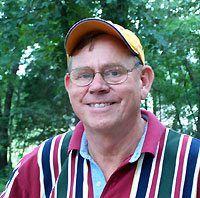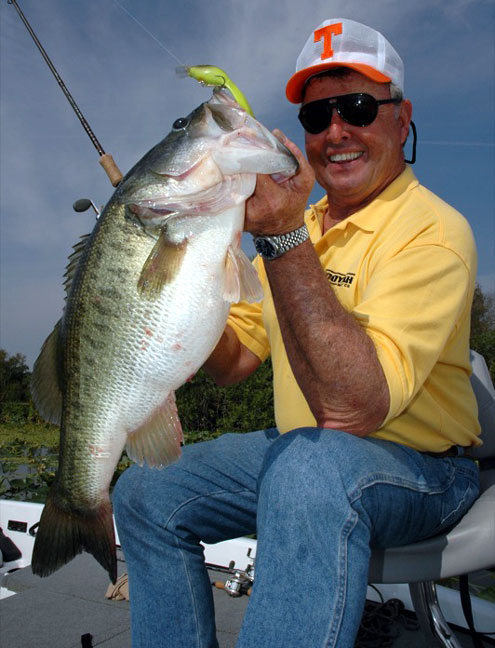Bill Dance, America’s Favorite Fisherman, is a regular guest on my week outdoors radio show. I feel very fortunate to have such a knowledgeable personality willing to share his knowledge of fishing, which he has amassed over a lifetime of spending time on the water.
If you spend much time visiting with Bill, one of the reasons for his success becomes crystal clear, other than his radar-like fish locating skills. He genuinely loves people and sharing his many experiences.
This fact is obvious when listening to him talk about the ‘Good Old Days’ back in the sixties when he fished from a rented boat at my Uncle Luke’s little fishing camp on Horse Shoe Lake near Hughes, Arkansas, not far from Memphis where Bill lived at the time.

On last week’s radio show, I asked Bill to divulge some of the early spring bass catching tips that have helped him win tournaments in the past. I already knew many of the fine points Bill spoke of but using his unique style of instructing, he enlightened me and I’m sure many of my guest with some ‘basics’ of successful spring bass fishing.
“After that first little warming trend in late March, everyone is anxious to get out on the water and catch fish and that’s a good thing," says Dance. "But truthfully, spring and especially early spring, is one of the most difficult times to pattern bass. On the other hand, it’s also the best time to catch the biggest bass of your life. Those big old sow bass will never be heavier than they are right now.”

Bill pointed out that during early spring, bass could be likened to a yo-yo on a string. They pull from shallow water to deep water with each period of cooling and warming weather.
“Water temperature is never more important to locating and catching fish than it is right now," added Dance. “Many anglers are concerned only with surface temperature but the temperature of water down closer to bottom is much more important, especially when fishing shallow water."
Bill says he is a firm believer in carrying an accurate thermometer and taking reading often.
“This time of year, bass will be pulling into shallow water on the north, northwest and west side of the lakes first," Bill continued. "Knowledge of this fact alone will help you catch more bass the next few weeks. Keep in mind that bass in one large cove have absolutely no idea of what the water temperature might be in a cove a mile down the lake. Conversely, it’s the variations of temperature in the cove you’re fishing that will help you locate active bass.
"Say, for instance, the water is 12-feet deep and 57 degrees a couple feet up from bottom at the mouth of the cove you’re fishing. You use your trolling motor and get into the backwaters, which might be four-feet deep. Another temp check indicates two degrees warmer water. This is where you can expect to find active bass. Of course, bass will be in transition this time of year and all the fish won’t be shallow at the same time, but the warmest water available is what spawning bass are looking for and it’s where you will find the heaviest concentration of fish.”
It’s easy to just ‘chunk and wind’ when bass fishing but if you think of your next excursion for bass as a ‘hunt’ rather than simply casting practice, you’re likely to catch more fish. Take a trip I enjoyed last week to some gravel pits and backwater sloughs I have access to close to my home.
This was my first bass fishing trip of the season. The sun had been shining a couple of days, there was a light wind, and I just KNEW the bass would be biting. I fish small waters a good bit with a little Kayak-like boat that sets low in the water and is easy to paddle. After thirty minutes of fishing, I had only one strike, and I knew these ponds held plenty of bass. Then I begin thinking about some of my conservations with Dance about locating fish.
Then...I started really bass fishing, locating likely targets such as lay down logs, brush and shoreline reeds to toss my Texas rigged plastic worm. I noted a tree about half submerged, its top was visible and I could make the outline of its trunk underwater. I positioned my little boat so that I could cast up close to shore and drag the bait parallel to the trunk. BINGO! A chunky three-pound bass telegraphed that telltale tapping on the line that indicated a strike. I set the hook and was in business.
THEN…I started thinking like a bass HUNTER. I specifically target bits of cover that had features that would attract bass.
I fished the north side of the ponds, keying brush and logs around the mouth of little inlets and pockets leading off the main body of water. In the next hour, I have caught six bass. Yes, bass fishing can be a complex sport, but sticking with the basics will help you find and catch bass.
Listen to Luke visit with Bill Dance and his other guests at www.catfishradio.com